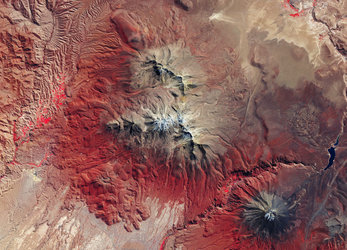Accept all cookies Accept only essential cookies See our Cookie Notice

About ESA
The European Space Agency (ESA) is Europe’s gateway to space. Its mission is to shape the development of Europe’s space capability and ensure that investment in space continues to deliver benefits to the citizens of Europe and the world.
Highlights
ESA - United space in Europe
This is ESA ESA facts Member States & Cooperating States Funding Director General Top management For Member State Delegations European vision European Space Policy ESA & EU Space Councils Responsibility & Sustainability Annual Report Calendar of meetings Corporate newsEstablishments & sites
ESA Headquarters ESA ESTEC ESA ESOC ESA ESRIN ESA EAC ESA ESAC Europe's Spaceport ESA ESEC ESA ECSAT Brussels Office Washington OfficeWorking with ESA
Business with ESA ESA Commercialisation Gateway Law at ESA Careers Cyber resilience at ESA IT at ESA Newsroom Partnerships Merchandising Licence Education Open Space Innovation Platform Integrity and Reporting Administrative Tribunal Health and SafetyMore about ESA
History ESA Historical Archives Exhibitions Publications Art & Culture ESA Merchandise Kids Diversity ESA Brand Centre ESA ChampionsLatest
Space in Member States
Find out more about space activities in our 23 Member States, and understand how ESA works together with their national agencies, institutions and organisations.
Science & Exploration
Exploring our Solar System and unlocking the secrets of the Universe
Go to topicAstronauts
Missions
Juice Euclid Webb Solar Orbiter BepiColombo Gaia ExoMars Cheops Exoplanet missions More missionsActivities
International Space Station Orion service module Gateway Concordia Caves & Pangaea BenefitsLatest
Space Safety
Protecting life and infrastructure on Earth and in orbit
Go to topicAsteroids
Asteroids and Planetary Defence Asteroid danger explained Flyeye telescope: asteroid detection Hera mission: asteroid deflection Near-Earth Object Coordination CentreSpace junk
About space debris Space debris by the numbers Space Environment Report In space refuelling, refurbishing and removingSafety from space
Clean Space ecodesign Zero Debris Technologies Space for Earth Supporting Sustainable DevelopmentLatest
Applications
Using space to benefit citizens and meet future challenges on Earth
Go to topicObserving the Earth
Observing the Earth Future EO Copernicus Meteorology Space for our climate Satellite missionsCommercialisation
ESA Commercialisation Gateway Open Space Innovation Platform Business Incubation ESA Space SolutionsLatest
Enabling & Support
Making space accessible and developing the technologies for the future
Go to topicBuilding missions
Space Engineering and Technology Test centre Laboratories Concurrent Design Facility Preparing for the future Shaping the Future Discovery and Preparation Advanced Concepts TeamSpace transportation
Space Transportation Ariane Vega Space Rider Future space transportation Boost! Europe's Spaceport Launches from Europe's Spaceport from 2012Latest
Lima, Peru
Thank you for liking
You have already liked this page, you can only like it once!
Lima, the capital and largest city of Peru, is featured in this Copernicus Sentinel-2 image.
Zoom in to see this image at its full 10 m resolution or click on the circles to learn more about the features in it.
The commercial and industrial centre of Peru, Lima is located on the mostly flat terrain in the Peruvian coastal plain, within the valleys of the Chillón, Rímac and Lurín rivers. The city is bordered on the east by the foothills of the Andes Mountains and on the west by the Pacific Ocean.
Lima can be seen directly on the south bank of the Rímac River, which flows for around 200 km through the Lima Region, before emptying near Callao – a seaside city and port in the Lima metropolitan area (the largest metropolitan area of Peru).
Lima’s historical centre was declared a UNESCO World Heritage Site in 1988 owing to its large number of historical buildings dating from the Spanish colonial era. One of the most notable characteristics of Lima is the barren desert that surrounds the city, with the sand supporting little to no plant life, with the exception of where water has been artificially provided.
Although Lima is located at a tropical latitude, the cool offshore Humboldt Current (also known as the Peru Current) produces a year-round temperate climate. The cooling of the coastal air mass produces thick cloud cover throughout winter and the dense sea mist, known locally as garúa, often rolls in to blanket the city. In this image, captured on 20 April 2020, several cloud formations can be seen dotted along the coast.
Callao is Peru’s main seaport and home to its main airport, Jorge Chávez International Airport. Several small boats and vessels can be seen near the port. Callao has several islands: San Lorenzo Island (currently used as a military base), El Frontón (a former high security prison), the Cavinzas Islands, and the Palomino Islands, where numerous sea lions and sea birds live.
The Copernicus Sentinel-2 mission consists of a pair of twin satellites that orbit Earth once every 100 minutes, together imaging a path on Earth’s surface 580 kilometres wide. The satellites observe in 13 spectral bands – from visible to infrared light – giving various perspectives on land and vegetation. This means that the mission can be used to retrieve a wealth of different information about Earth’s surface.
This image is also featured on the Earth from Space video programme.
-
CREDIT
contains modified Copernicus Sentinel data (2020), processed by ESA -
LICENCE
CC BY-SA 3.0 IGO or ESA Standard Licence
(content can be used under either licence)

Earth from Space: Lima, Peru

Earth from space: Chachani, Peru

Chachani, Peru

Peruvian Andes















 Germany
Germany
 Austria
Austria
 Belgium
Belgium
 Denmark
Denmark
 Spain
Spain
 Estonia
Estonia
 Finland
Finland
 France
France
 Greece
Greece
 Hungary
Hungary
 Ireland
Ireland
 Italy
Italy
 Luxembourg
Luxembourg
 Norway
Norway
 The Netherlands
The Netherlands
 Poland
Poland
 Portugal
Portugal
 Czechia
Czechia
 Romania
Romania
 United Kingdom
United Kingdom
 Slovenia
Slovenia
 Sweden
Sweden
 Switzerland
Switzerland
























